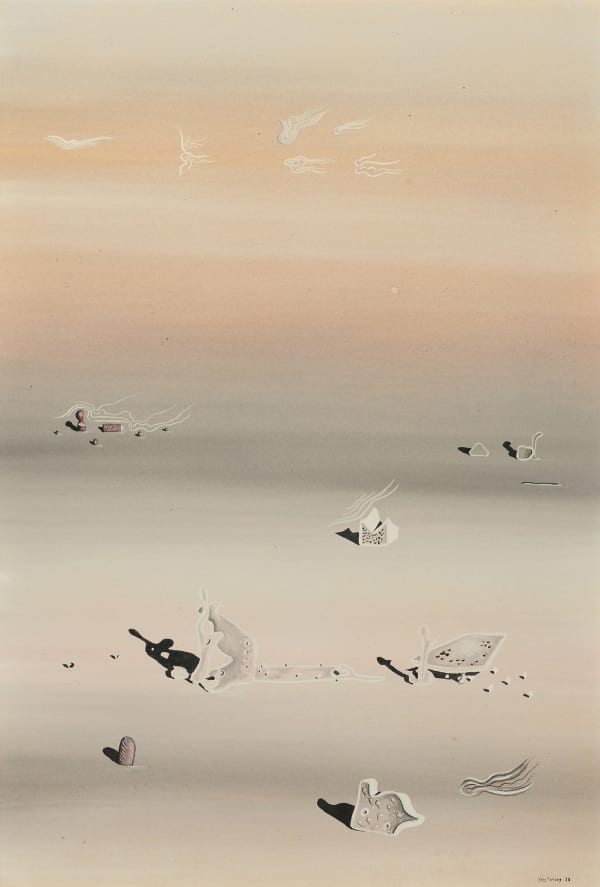Born in Paris, Tanguy spent summers in Brittany, where the landscape of stone formations—the Celtic dolmens, menhirs, and mystical sites—created a lasting impression on the artist. At age 18, as a merchant seaman, he traveled to Africa and South America, returning to Paris in 1922. Inspired upon seeing the art of Giorgio de Chirico and reading the journal La Revolution surréaliste, he began drawing and painting without any academic training. In 1925, Tanguy was introduced to several Surrealists writers and painters, including Louis Aragon, André Masson, and André Breton. One of the earliest painters of the movement with Salvador Dalí, Max Ernst, and Alberto Giacometti, Tanguy was a highly regarded representative of surrealism. He was a dedicated participant and member of the group; though he seldom spoke, he firmly supported Breton.
His surrealist landscapes are environments of the inner world, imagination, and dreams, depicted with illusionistic precision. At times the canvases are densely populated with biomorphic shapes, other times they are minimalistic. The scenes vary in the eye of the viewer: underwater; outer space; deserts; rock formations initially seem abstract are identified with distinct beings and objects; forms float; blurred backgrounds undulate. In 1939 he began a relationship with the American artist Kay Sage, whom he joined in New York and married. In 1941 they settled in Woodbury, Connecticut among several of the Surrealists and remained in the United States after World War II. Tanguy died in Woodbury in 1955.
-

Rendevous of Dreams at Hamburger Kunsthalle
June 13, 2025 - October 12, 2025One hundred years ago, the most renowned artistic movement of the twentieth century emerged in Paris: Surrealism. Sparked by a reconsideration of value systems in...Read more -

An Expansive New Surrealism Show Celebrates 100 Years Of Artistic Revolution
Artnet Oct 4, 2024Featuring more than 500 objects, the Centre Pompidou's 'Surrealism' show explores the global reach and diversity of the artistic movement. Between the rise of artificial...Read more -

Under a revolutionary, emancipatory spell: Venice exhibition explores Surrealism’s interest in the occult
The Art Newspaper APR 2022Major show at the Peggy Guggenheim Collection includes works by leading lights of Surrealism, including Leonora Carrington and Dorothea Tanning Waiting for their visas to...Read more -

Surrealism and Magic: Enchanted Modernity Co- Curator, Gražina Subelytė Interviewed
Christie's MAR 2022As the exhibition Surrealism and Magic: Enchanted Modernity opens in Venice, its curator Gražina Subelytė talks to Christie's about the role of the occult in...Read more






